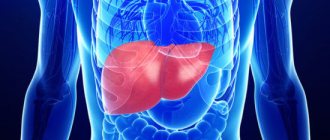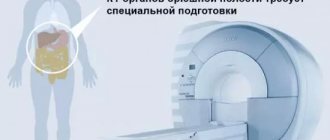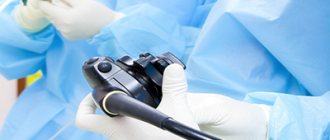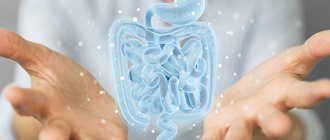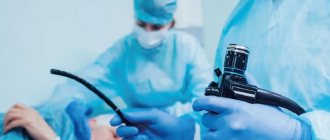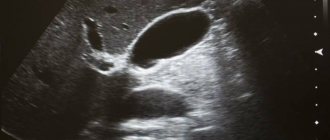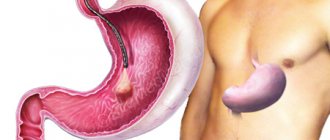Why are such examinations prescribed?
Duodenal intubation - examination of the biliary tract.
Duodenal intubation is considered one of the advanced research methods, indispensable in the diagnosis of diseases of the bile ducts.
In other words, if inflammatory processes begin in the pancreas, liver or organs communicating with them, the composition of the secretions produced by the digestive system will change. And duodenal sounding will help detect and record such changes.
On what basis are such examinations prescribed? An indication for referring a patient for duodenal intubation may be the manifestation of such alarming symptoms as:
- bitterness in the mouth;
- copious sputum production;
- pain in the hypochondrium (usually on the right);
- nausea and vomiting syndrome;
- increased concentration of urine.
Indications
The widely used method of endoscopic examination of the stomach, FGS, allows one to determine the functional activity of the organ only at the time of examination. Probing of the stomach makes it possible to study the secretory function of the organ during various periods of its activity.
- stomach ulcer;
- anemia;
- malignant neoplasms;
- diseases of the hepatobiliary system;
- pathologies of the stomach of unknown etiology (achlorhydria, irritable stomach syndrome);
- gastritis.
Contraindications
- stage of exacerbation of stomach ulcer;
- stomach bleeding;
- suspicion of ulcer penetration;
- pathologies of the esophagus: narrowing, cicatricial changes in the wall, dilated veins;
- organic lesions of the heart muscle, complicated by cardiovascular failure;
- arterial hypertension;
- pregnancy;
- bronchial asthma;
- diseases of the nasopharynx – lack of free breathing (rhinitis, tonsillitis);
- serious condition of the patient;
- mental illnesses associated with inappropriate behavior of the patient.
Progress of the procedure
Duodenal intubation is necessary for a complete diagnosis of gastrointestinal diseases.
As for the methodology for performing duodenal intubation, today doctors mainly use the fractional method.
What does this mean in practice? The essence of the fractional sounding method is to gradually extract the contents of the duodenum, carried out in several approaches (usually five) with intervals of 5-10 minutes between them.
This method allows not only to graphically record the amount of biomaterial obtained, but also to track changes in its composition over time.
Thanks to this feature, a specialist can reliably determine the level of bile acid secretion in the body, which is simply necessary for a full diagnosis of many diseases of the gastrointestinal tract.
What can replace the endoscopic method?
An alternative method that does not require swallowing the tube is a special diagnostic capsule. The study is not yet used in government institutions due to its high cost, but is used in private clinics.
The capsule measures about 15 mm and is equipped with a special video camera with a recording and transmitting device.
The program provides continuous operation for seven hours. It is eliminated from the body through the intestines naturally. The study does not require special preparation. The capsule is swallowed with water. It travels throughout the digestive tract, recording information.
Viewing makes it possible to make a diagnosis, but it excludes taking material for a biopsy or using it for medicinal purposes.
Modern hardware methods for diagnosing gastric pathology arose from practice. The need for research is beyond doubt. The prevalence of gastritis in the adult population reaches epidemic proportions. That is why there is an increase in malignant tumors. The task of scientific developments is to obtain sufficiently informative methods of examination.
Preparing for probing
Drugs that stimulate digestion should not be taken before probing.
As with any similar diagnostic procedure, the patient is prepared for duodenal intubation - carefully and in advance. What rules must the examinee adhere to in order for the examination to go as planned?
First of all, the patient should strictly adhere to all the recommendations given to him by the doctor who issued the referral for sounding. However, there are some general rules for preparing for the procedure. Let's list them:
- Duodenal intubation is performed strictly on an empty stomach, therefore, after waking up and until the procedure itself, the subject is prohibited from taking any food.
- Preparation for the study should begin the day before. So, a few days before the scheduled procedure, the patient will have to temporarily give up any “heavy” foods, as well as any food that causes increased gas formation. In particular, any “milk”, potatoes, as well as bread made from dark varieties of flour will be strictly prohibited for the examinee.
- About a week before the procedure, the subject will have to completely stop using any choleretic drugs (allochol, barbara salt, holagol, barberine, flamin, cyclone, xylitol, magnesium sulfate, etc.).
- Similar bans will be imposed on some other drugs. These include laxatives and vasodilators, as well as agents that have a targeted antispastic effect. Any medications that stimulate digestion, for example, Festal and Pancreatin, also fall into the category of prohibited drugs.
- On the eve of the procedure, the patient is prescribed a special drug - atropine. This product is used in the form of a 0.1% solution. The patient can take the prescribed dose of 8 drops either orally, dissolving the drug in warm water, or in the form of a subcutaneous injection.
Detailed description of the research technique
The probing technique consists of stages:
- The end of the probe, which may be equipped with a small chamber or holes, is placed on the tongue. The purpose of the study determines the choice of equipment type. The patient then swallows to move the probe inside. The tube moves further until the desired level is reached. The level is calculated as follows: 100 cm is subtracted from the patient’s height or 55 cm is added from the edge of the teeth. This allows you to calculate the level of tube insertion individually.
- The probe can be inserted through the nasal cavity. The tube is lubricated with Vaseline and carefully inserted 10 cm into the nose. Then the subject is asked to swallow. Next, the desired depth of tube insertion is achieved.
- For fixation, the tube is attached to the patient's clothing.
- Using a vacuum suction or syringe, the contents of the stomach are aspirated. The part of the secretion taken away is called the “fasting” portion.
- Obtaining part of the contents “on an empty stomach” or basal secretion is carried out in several stages. The duration of each stage is five minutes, the break between stages is ten minutes.
- Later, the production of gastric secretions is stimulated using a parenteral stimulus. This type of stimulants includes: histamine, insulin, pentagastrin. The stimulant is selected to be strong and fast-acting. Also, the secretory effect is achieved by administering drugs enterally. Then, using a tube, special stimulating drugs or products are introduced into the stomach, assessing the functioning of the stomach after eating.
- Fifteen minutes later, the next gastric contents are collected.
- The sampling is carried out seven times over the course of an hour.
- The tube is removed and the patient is allowed to rest.
How is research done using a probe?
The probing procedure can take from an hour to an hour and a half.
Before starting the diagnostic procedure itself, the doctor asks the patient to take a standing position and measures the distance from the oral cavity to the navel of the subject.
A specialist will need this information to correctly calculate the length of the probe to use. After this, the patient is seated on the couch, given a special tray, and the examination begins directly.
The main difficulty of probing is that the patient will have to “swallow” the probe on his own. If the patient does this incorrectly, he will provoke a strong gag reflex. How can this be avoided? In this regard, experts give several clear recommendations:
- The internal organs of the subject should not be “squeezed”. That is why before the procedure he should wear the loosest and most comfortable clothes possible.
- During the examination itself, it is recommended to loosen the belt on your trousers and unbutton the top buttons on your blouse or shirt.
- During the procedure itself, the patient should try to breathe through the nose and as deeply as possible, tightly fixing the probe with his lips.
- While “absorbing” the probe, the patient should try to simultaneously swallow the saliva that has accumulated in the mouth. However, this must be done very slowly, otherwise you may choke and provoke a gag reflex. Moreover, if the probe is quickly swallowed, there is a risk that the hose will simply curl up in the subject’s stomach.
The patient should follow all the above recommendations until the research device reaches his stomach. You can judge that this happened by the marks on the probe itself. Or - by blowing air through the hose (usually this is done using a syringe). If during such manipulations in the chest area the patient hears gurgling and bubbling, then everything is going as planned.
Nurse's action algorithm. "Technology of fractional intubation of the stomach"
Manipulation No. 31
"Technology of fractional intubation of the stomach"
Purpose: diagnostic.
Objectives: study of gastric secretory function
Indications: doctor's orders.
Contraindications: gastrointestinal bleeding, esophageal strictures, acute cardiovascular and respiratory failure, high arterial hypertension, individual intolerance to parenteral irritants.
Equipment: soap; gloves; 2 towels (for nurse and patient); sterile thin gastric tube (disposable); syringe with a capacity of 20 ml for aspiration of gastric contents (electric suction); kit for subcutaneous administration of the drug; 0.025% pentagastrin solution; rack with 9 test tubes; container for collecting gastric juice; containers with disinfectants.
1. Explain to the patient the procedure for conducting the study, reassure him and obtain consent for the procedure.
2. Determine the patient’s weight, measure blood pressure, find out if he has previously had allergic reactions to the administration of the drug.
3. Invite the patient to sit correctly and comfortably (lean tightly against the back of the chair and slightly tilt his head forward), place a towel on the patient’s chest and neck.
4. Determine the distance at which the patient will have to swallow the probe (height in cm – 100).
5. Wash your hands, dry with a personal towel and treat with a skin antiseptic.
6. Put on gloves, open the bag, remove the sterile gastric tube from it, take it with your right hand at a distance of 10-15 cm from the blind end, and support its free end with your left hand.
7. Invite the patient to open his mouth, place the blind end of the probe on the root of the tongue, and then push it deeper into the pharynx. The patient must make active swallowing movements at the command of the nurse, and wipe off the saliva with a napkin.
8. Note: If the patient coughs, remove the tube immediately.
9. Place the patient on his left side after inserting the tube into the stomach.
10. Remove the contents of the stomach (the remainder of the empty stomach) with a syringe or electric suction for 5 minutes, then measure its volume and pour it into a container.
11. Aspirate basal gastric secretions continuously for 60 minutes, changing containers every 15 minutes (1st, 2nd, 3rd, 4th portions). At the same time, measure the volume of each 15-minute portion, pour 5-10 ml of secretion into test tubes for research, and pour the excess into a container.
12. Fill the syringe with the required dose of pentagastrin (6 mcg per kilogram of body weight) and inject it subcutaneously.
13. Remove gastric contents for an hour, changing containers every 15 minutes (5th, 6th, 7th, 8th servings), measure their volumes, pour out 5-10 ml for research, and drain the excess .
14. Sit the patient down, make sure the patient feels comfortable;
15. Infection safety:
· Remove the probe, immerse it in 5% chloramine solution for 60 minutes, and then discard.
· Remove gloves and immerse them in 3% chloramine solution for 60 minutes.
16. Treat your hands at a hygienic level.
17. Deliver to the laboratory all portions received, indicating on the department’s form, full name, gender, age, weight of the patient, volumes of all portions, and the nature of the study.
Manipulation No. 31
"Technology of fractional intubation of the stomach"
Purpose: diagnostic.
Objectives: study of gastric secretory function
Indications: doctor's orders.
Contraindications: gastrointestinal bleeding, esophageal strictures, acute cardiovascular and respiratory failure, high arterial hypertension, individual intolerance to parenteral irritants.
Equipment: soap; gloves; 2 towels (for nurse and patient); sterile thin gastric tube (disposable); syringe with a capacity of 20 ml for aspiration of gastric contents (electric suction); kit for subcutaneous administration of the drug; 0.025% pentagastrin solution; rack with 9 test tubes; container for collecting gastric juice; containers with disinfectants.
1. Explain to the patient the procedure for conducting the study, reassure him and obtain consent for the procedure.
2. Determine the patient’s weight, measure blood pressure, find out if he has previously had allergic reactions to the administration of the drug.
3. Invite the patient to sit correctly and comfortably (lean tightly against the back of the chair and slightly tilt his head forward), place a towel on the patient’s chest and neck.
4. Determine the distance at which the patient will have to swallow the probe (height in cm – 100).
5. Wash your hands, dry with a personal towel and treat with a skin antiseptic.
6. Put on gloves, open the bag, remove the sterile gastric tube from it, take it with your right hand at a distance of 10-15 cm from the blind end, and support its free end with your left hand.
7. Invite the patient to open his mouth, place the blind end of the probe on the root of the tongue, and then push it deeper into the pharynx. The patient must make active swallowing movements at the command of the nurse, and wipe off the saliva with a napkin.
8. Note: If the patient coughs, remove the tube immediately.
9. Place the patient on his left side after inserting the tube into the stomach.
10. Remove the contents of the stomach (the remainder of the empty stomach) with a syringe or electric suction for 5 minutes, then measure its volume and pour it into a container.
11. Aspirate basal gastric secretions continuously for 60 minutes, changing containers every 15 minutes (1st, 2nd, 3rd, 4th portions). At the same time, measure the volume of each 15-minute portion, pour 5-10 ml of secretion into test tubes for research, and pour the excess into a container.
12. Fill the syringe with the required dose of pentagastrin (6 mcg per kilogram of body weight) and inject it subcutaneously.
13. Remove gastric contents for an hour, changing containers every 15 minutes (5th, 6th, 7th, 8th servings), measure their volumes, pour out 5-10 ml for research, and drain the excess .
14. Sit the patient down, make sure the patient feels comfortable;
15. Infection safety:
· Remove the probe, immerse it in 5% chloramine solution for 60 minutes, and then discard.
· Remove gloves and immerse them in 3% chloramine solution for 60 minutes.
16. Treat your hands at a hygienic level.
17. Deliver to the laboratory all portions received, indicating on the department’s form, full name, gender, age, weight of the patient, volumes of all portions, and the nature of the study.
Patient behavior after probing
The procedure is tedious and lasts at least 2 hours, so the patient must rest.
Recommendations:
- Bed rest for 4-8 hours depending on how you feel.
- Take food and liquid no earlier than 2 hours after the procedure. The food should be light (mashed porridge, pureed soup) and not irritate the gastric mucosa. You should eat in small portions, as overeating can cause vomiting.
- Lack of physical activity. Take medications only with the permission of a doctor.
Evaluation of results
The results of fractional gastric intubation are assessed by the level of chlorides that provide acidity, pepsin, and pathological impurities. The titration method is used. Of practical importance is free hydrochloric acid, which is calculated in titration units (TE).
As a result of probing, the following samples are obtained: one - fasting, 4 portions of basal secretion, 4 portions - stimulated.
The norm is taken to be 20 TU of free hydrochloric acid.
A decrease in acidity below 20 TU is a hypoacid condition and manifests itself in chronic atrophic gastritis, malignant neoplasms, infections, and poisoning.
An increase above 20 TU means hyperacidity is characteristic of stomach ulcers and chronic gastritis.
Achylia or the absolute absence of free acid accompanies diseases such as stomach cancer, chronic gastritis, B12-deficiency anemia, severe diabetes mellitus and others.
The sum of all acidic foods contained in the stomach is called total acidity - the normal value is 40–60 TU .
Lactic acid is not formed in a healthy stomach. Its appearance in one of the portions indicates lactic acid fermentation, which appears when food stagnates in the stomach, or as a metabolite in a cancerous tumor.
Organoleptic properties
The volume of each serving is 5-40 ml. The contents of the stomach are normally liquid; if the consistency is viscous and viscous, this indicates inflammation of the mucous membrane, which increases the production of mucoid proteins of protective mucus.
Gastric secretions are normally colorless. When bile is refluxed from the duodenal ampulla, the contents of the stomach turn yellowish or greenish. If there is an admixture of blood, the color becomes rusty, reminiscent of coffee grounds. There may be a small amount of mucus lumps present.
The smell is slightly sour or absent at all. Stagnation of food causes a fermentation smell. Incomplete digestion of proteins leads to their rotting, producing a putrid odor.
Microscopy of sediment reveals:
- epithelial cells;
- leukocytes;
- fragments of dietary fiber;
- atypical cells are found in stomach cancer.
